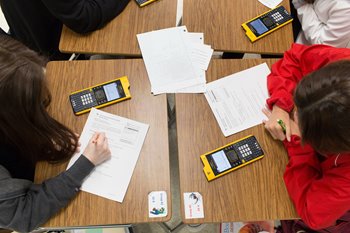Gaps Persist in Access to Gateway Math, Science Classes, Federal Data Show
Stephen Sawchuk | Education Week |
May 1, 2018
Disparities in the proportion of black and Latino students who take algebra early in their careers compared with their peers—as well as in calculus, physics, and other advanced courses—are raising fresh questions about the origin of those gaps and the best way to eradicate them.
Are the gaps primarily due to racism? Tracking? A symptom of ongoing teacher shortages? And where do solutions need to be targeted?

If you are not preparing students to think algebraically, you are losing the game before it even starts,
said Michelle Stie, the vice president of teaching and learning for the National Math and Science Initiative, a nonprofit providing training and curriculum support. "If you start with the premise that STEM (science, technology, engineering, and math) is a lever to accessing further opportunity, where does the school access those resources and get the support to access them?"
Data released last week from the U.S. Department of Education's office for civil rights show that the proportion of students of color who take high-level math and science courses continues to trail that of their white peers—jeopardizing those minority students' ability to master the knowledge they need to secure a college-preparatory diploma. And the segregation of American high schools seems to be a factor in students' access to those types of courses.
The data reflect the 2015-16 school year and were submitted by nearly every public school in the United States.
Disparities were stark for some of the most advanced classes. Black students made up 16 percent of high school enrollment, but just 12 percent of physics enrollment and 8 percent of calculus enrollment. Latino students made up 24 percent of high school enrollment, but represented 16 percent of students enrolled in calculus and 19 percent of those in advanced mathematics. (That term excludes calculus but includes courses beyond Algebra 2.)
READ MORE >>